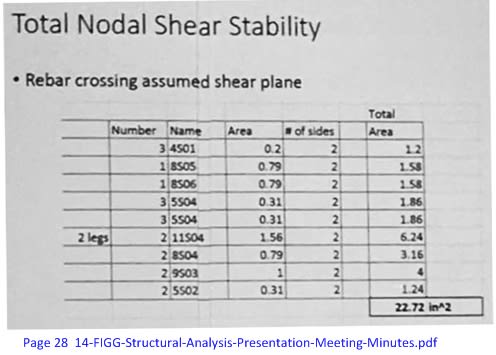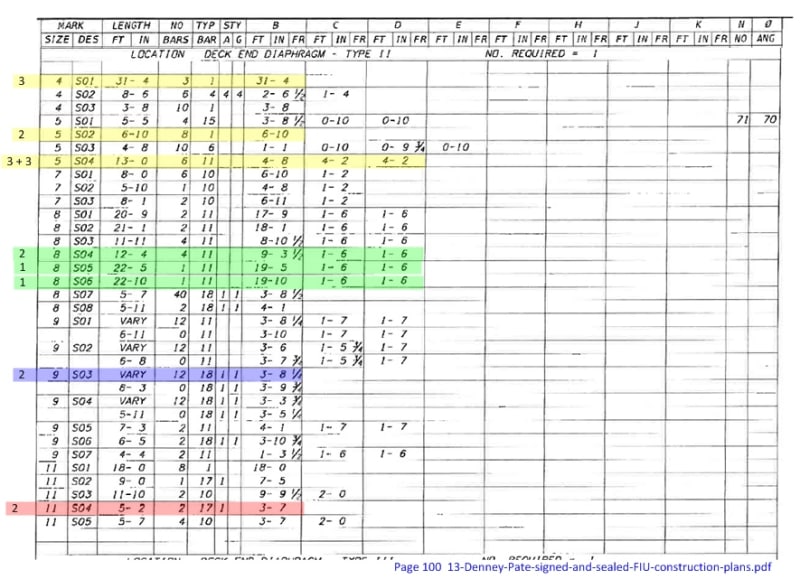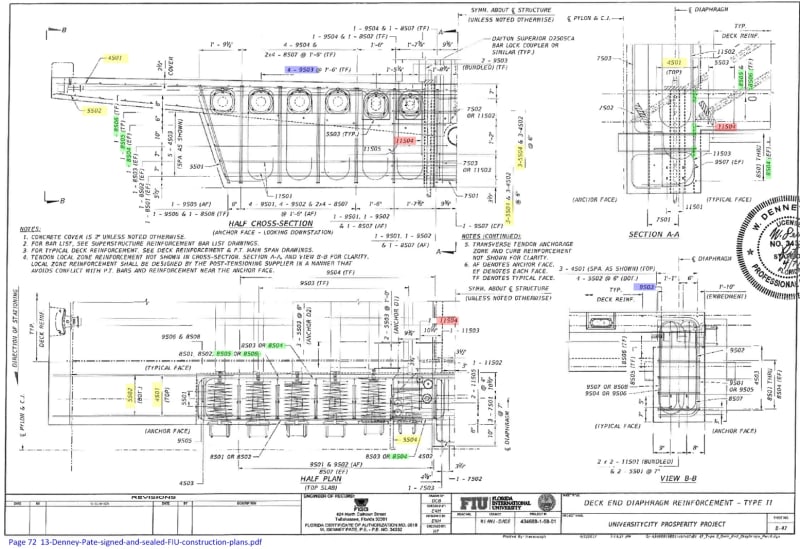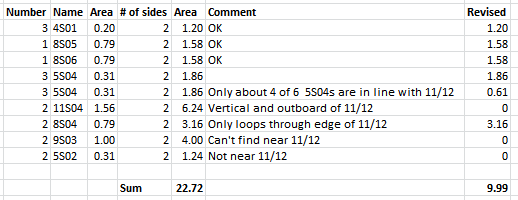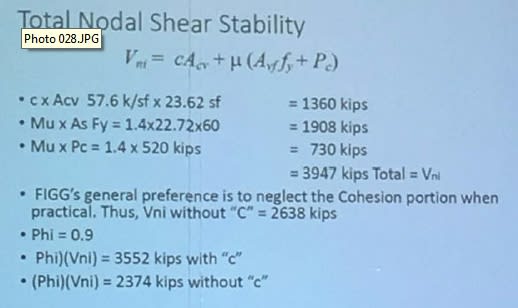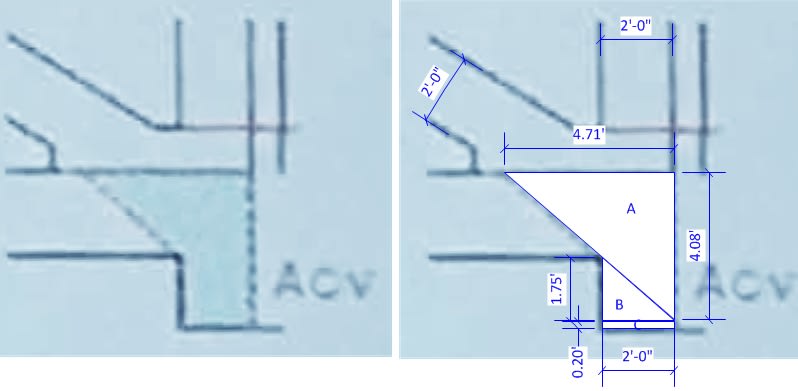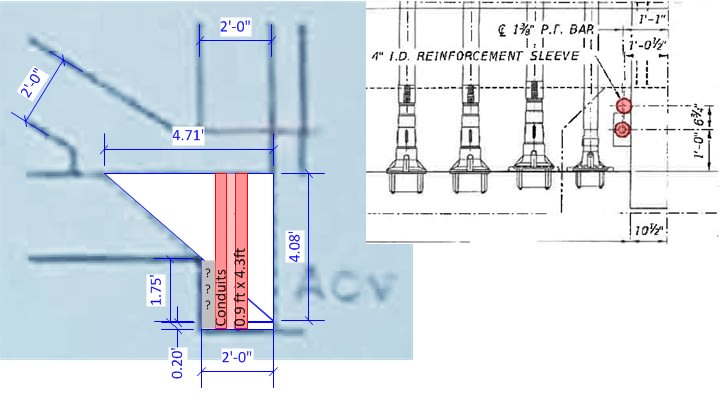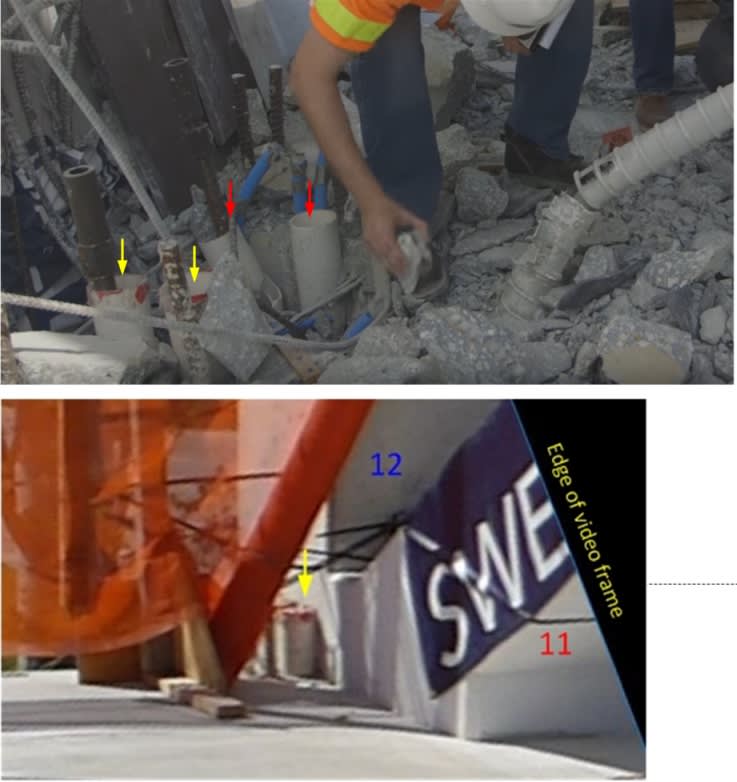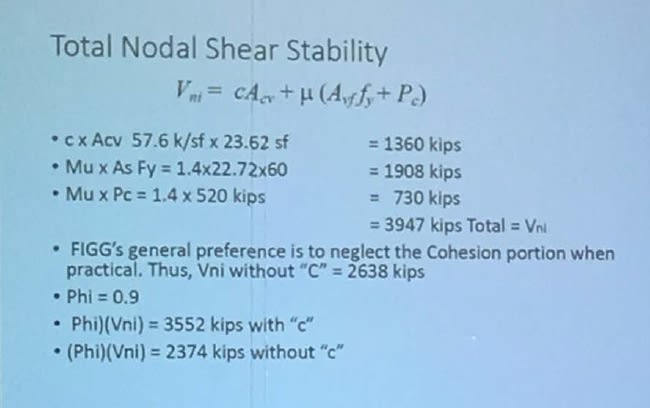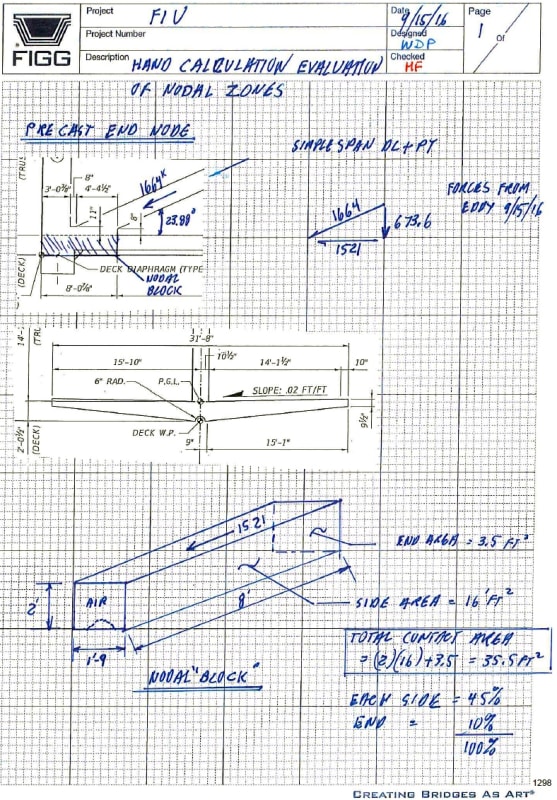Summary of series of posts examining the FIGG presentation calculations around node 11/12/deck "Total Nodal Shear Stability".
The equation has three contributions, each of which I've discussed in a previous post, and noticed that there are reasons to believe that each one is overstated in the presentation:
1. Cohesion component: Presentation uses 23.6 sqft as the area of the shear planes (total of the two sides), but that area is interrupted by sleeves that reduce this to 15.6.
Presentation overstates by 50%.
2. Rebar shear component. Presentation uses 22.7 sqin for the rebar crossing the shear planes (total two sides). I was able to find only about 10 sqin of the listed rebar (ie: only about 45% of it). That would put the presentation overstatement at over 120%. However, it's possible that the large bars that I either couldn't find, or that appeared not to cross the shear plane, were perhaps detailed in on some other drawing. (It might be feasible to correlate the drawings with post-failure photos.)
3. "Clamping" component: The deck's transverse tendons squeeze on the 11/12/deck node clamping it in place. The force used in the presentation is the average effect that the transverse tendons would have away from the ends of the span. My critique is that there is a uniquely large gap from the end of the deck to the first tendon, and that the area in question is only subject to the tendons on its south, with none on its north, unlike the middle of the deck. As a consequence, I (admittedly naively) think that the presentation overstates the clamping force by a factor of two or three. (Ie: Actual clamping force is only 33% to 50% of the presentation value.)
Summary of the Total Nodal Shear Stability components:
Code:
. Presentation Revised
Cohesion 1360 910
Rebar shear 1980 890? (But there may be additional bars detailed elsewhere.)
Clamping 730 240 - 320
If the observations I've made here are valid, then obviously it's disappointing that such errors were made for the presentation to the crucial meeting, especially if they reflect the calculations done in designing the bridge in the first place, regardless of whether they turn out to be the root of the failure.
However, I reiterate that this is not my field of expertise, so certainly should not be taken as gospel.

